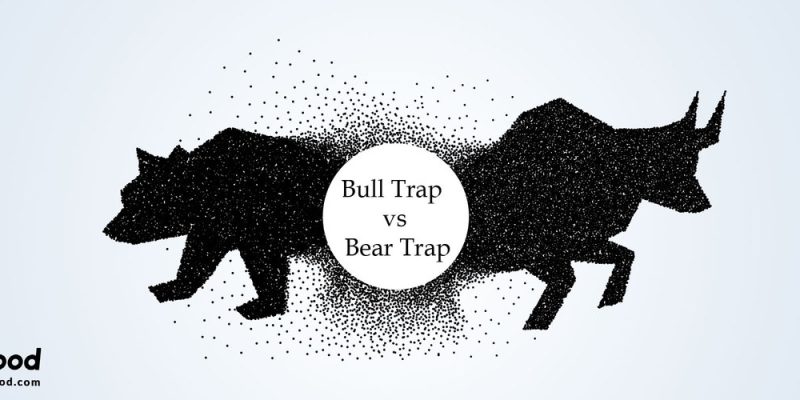
There are so many reasons why they say capital markets are cruel. One of those reasons is that bear trap and bull trap exist. Both of them cause inexperienced traders to lose money entering the wrong positions. We will discuss what a bear trap and a bull trap are and how to identify them.
Understanding and learning about bull or reverse bear traps is crucial for every trader. This is because inexperienced traders who can’t detect a bear trap will lose their money. Therefore, you need to learn what a bull trap is, so you can avoid losing your asset.
You can also read How to signup on the Wazirx NFT marketplace?
The investor who knows what a bear trap is will be able to identify it. Therefore, learning this will stop you from entering the wrong trades. We will also compare a bear trap against a bull trap, so you would know the difference. Then, let’s not waste so much time and begin.
How to know if it’s a bull or bear trap?
Now let’s discuss how you can know if it’s a bull trap or a bear trap. Before that, you should know that both a bear trap and a bull trap are false signals. Traders lose their money by entering a position because of a false signal. Then, let’s find out how a bull trap and a bear trap differ.
Difference between bear trap and bull trap
The main and the only difference between a bear trap and a bull trap is their direction. One of them is a Bull, and the other is a Bear. In a bear trap stock drops a little, and in a bull trap the price increases for a short time.
Now, let’s elaborate and explain how each of them works. We will first start by defining the bear trap.
Bear Trap
A bear trap is a false signal that causes traders to enter the wrong position. When an inexperienced trader looks at a bear trap, they think the price is gonna drop. They take the little false drops as a reverse in the main trend of the price. Therefore, they would enter a short position where the price is going to increase.
When traders witness a bull trap, they expect to see a reverse in the bullish trend of the price. Then, they would enter a sell position (bear), hoping to benefit from the trend reversal. But the bears will fail to decrease the price, and the market will continue its upward movement. Then, the traders who got caught in the bear trap will lose their money.
Bull Trap
The bull trap is the opposite of the bear trap, but it also is similar in some ways. When a bull trap happens, the inexperienced trader will think the bearish trend is over. They will expect to see a reverse trend and enter the long position (bull). Then, the market will drop a few small green candles, and the inexperienced trader will receive losses.
Now, let’s discuss the differences between a bull trap and a bear trap. A bear trap falsely signals that the bull trend will end, and a bear trend will begin shortly. Then, the trader will enter a short position and will receive a loss because it was a false signal.
A bull trap, on the other hand, gives a false signal that the trend will
How to identify a bear trap trader?
During a bear trap, the stock price will drop for a short time. In that short time of the bear trap, stock traders who aren’t familiar with a bear trap, would sell. The bear trap, stock price will start to increase, and it will be the beginning of the traders’ losses.
It’s hard to identify a bear trap or bull trap for someone who doesn’t know what to look for. Because in a bear trap, stock price drops, and it doesn’t seem like an abnormality. Therefore, it’s hard to recognize if it’s because of a bear trap stock price dropped or a bear trend.
You can identify a bear trap by looking at the trading volume. If the trend is reversing, you should be able to see an increase in the pivot point. In a bear trap, the price decreases without any major change in the trading volume.
You can visit TradingView to analyze charts with trading volume.
How to identify a bull trap?
In a bull trap, the stock seems to be reversed and in a new bullish trend. But after a few weak green candles, the price drops and continues with the bear trend. By nature, it’s hard to identify a bull trap as well as a bear trap. But we will discuss some ways you can identify a bull trap.
You can do the same thing you did with a bull trap to identify a bear trap. You should look for an increase in the trading volume of the stock or token you’re analyzing. If the trading volume did not increase, then you are probably witnessing a bull trap happening.
Another thing you can do is to look for confirmations in other indicators. You should check other indicators to check if they also signal a reverse in the trend or not. If they don’t signal the trend is reversing, then probably it’s a bull trap.
Do bear traps actually work?
Yes. Bear trap usually makes traders lose money by entering wrong positions. In a bear trap, stock price drops for a short time, bounces and continues to increase.
Some institutions create a bear trap to buy a token or stock at a cheaper price. During a bear trap stock, inexperienced investors and traders start selling. Then, the institutions will start buying back again after the bear trap. Therefore, it’s vital for anyone to learn what a bear trap and a bull trap are.

